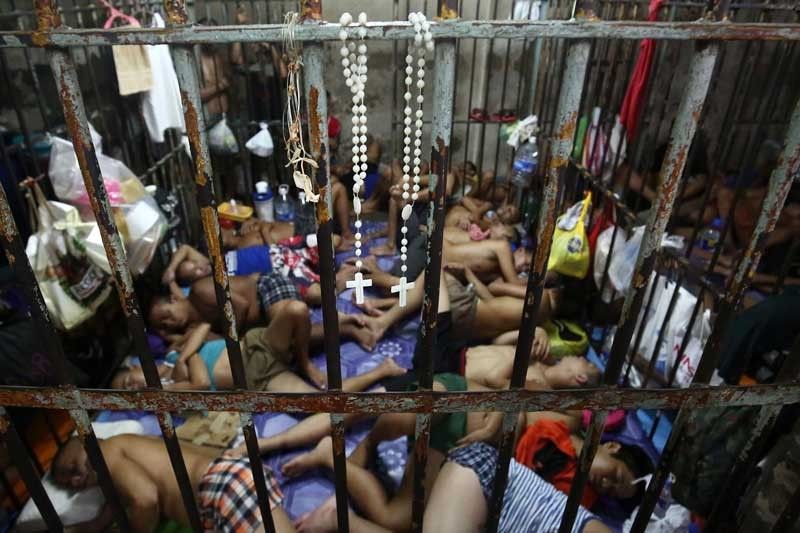‘Jail congestion drops 439% in 2018, but...’

MANILA, Philippines — The Commission on Audit (COA) has again called out the Bureau of Jail Management and Penology (BJMP) over the inhumane conditions in the country’s jails, noting an overpopulation of 439.48 percent.
In the annual audit report uploaded on its website yesterday, the COA said that while the congestion rate in the country’s jails decreased to 439.48 percent last year from 612 percent in 2017, the figure remains high, in violation of the BJMP’s own manual as well as the United Nations‘ standards on the treatment of prisoners.
“Congestion in jails lead not only to health and sanitation problems but also to increased gang affiliation of inmates. To sustain survival, inmates hold on to gangs or pangkat where they find protection, network of social support and most important, access to material benefits. These situations are prevalent in highly congested facilities,” the COA said.
Based on the audit body’s figures, the total jail population has reached 136,314 as of Dec. 31, 2018.
The figure exceeded the total ideal capacity of 25,268 and resulted in a variance of 111,046 inmates or equivalent to 439.48 percent of “congestion, overcrowding or clogging.”
In 2017, the country’s total jail population reached 146,302 as against the total ideal capacity of 20,653.
The figure shows a variance of 126,493 or 612 percent congestion rate.
In 2016, the total number of inmates was 126,946 as against the ideal capacity of 20,746. It had a variance of 106,200 or 511 percent congestion rate.
The COA said the continued overcrowding in the district, city, municipal and extension jails as well as female dormitories violates the BJMP’s “Manual on Habitat, Water, Sanitation and Kitchen in Jails” and the UN’s “Minimum Standard Rules for the Treatment of Prisoners.”
The COA said that under the BJMP manual, the ideal habitable floor area for each inmate is 4.7 square meters and the ideal maximum number of inmates per cell should only be 10.
It said Zamboanga peninsula has the most overcrowded jails with a population of 5,709 as of end-2018. The total capacity should only be 766, or an overcrowding rate of 645 percent or 4,943 inmates.
Central Visayas has the second most crowded jails with 19,751 inmates as against the ideal capacity of 2,665 or an overcrowding rate of 641 percent or 17,086 more inmates.
Calabarzon (Cavite, Laguna, Batangas, Rizal and Quezon) follows with 21,128 inmates as against the ideal capacity of 2,925, or an overcrowding of 622 percent or 18,203 inmates.
Jails in the Autonomous Region in Muslim Mindanao were the least congested with total population of only 143 inmates as against its capacity of 103.
The COA attributed the high population in jails to the increase in the number of drug-related cases in the country as well as the court’s slow or inexistent action on pending cases.
It said the lack of judges, postponement of hearings and slow disposition of cases that carry the penalty of life imprisonment were the causes of the court’s slow or inaction on pending cases.?The other reason cited was the non-release of detainees facing bailable offenses due to poverty.
“Some cases were bailable but detainees who are below poverty line cannot afford to post bail so they were stuck in the jails,” COA said.
It said that parcels of land where jail facilities are constructed are limited and construction or horizontal expansion of buildings is not possible.
The audit body recommended to the BJMP to prioritize lot acquisition, construction programs and projects aimed at improving jail facilities.
It urged the BJMP to improve the implementation of its existing programs to decongest jail cells such as the Good Conduct Time Allowance (GCTA) and the release on recognizance.
These programs allow compliant inmates’ early release from detention in exchange for community service and paying other obligations.
In response, the BJMP informed the COA that it is now working with the Supreme Court on the possibility of early release of inmates facing drug-related charges through the proposed Katatagan Kontra Droga sa Komunidad (KKDK) program.
- Latest
- Trending






























